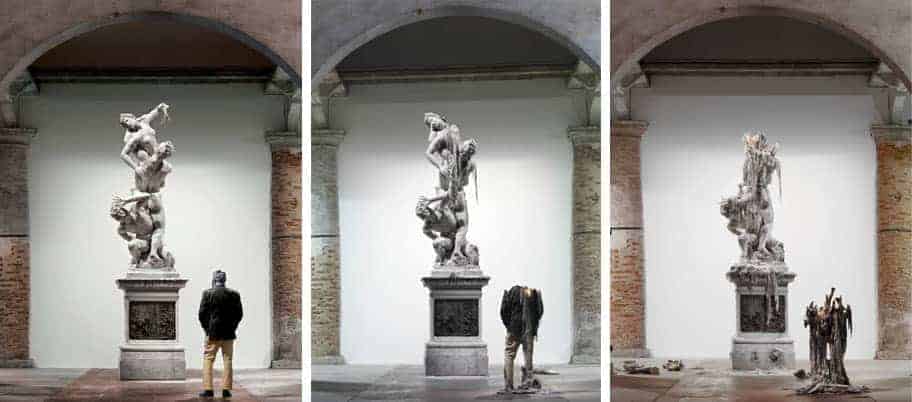Artistic merit doesn’t get “burnt”!
MERIT:
/ˈmer.ɪt/
1: The quality of being particularly good or worthy, especially so as to deserve praise or reward.
2: Praiseworthy quality: virtue

“It’s crazy out there…” …and it’s only getting worse in my opinion. One of the most legendary marchand d’art mentioned to me whilst discussing the rise in offers from courtiers and other “easy money maker wannabes” who are “burning” paintings left, right and center. What we have today is an infestation of people like this, as described in my previous article “Coyotes” [1], people who have access to almost any artwork, thanks to the beauty of technology, and who are offering it for sale, betraying fiduciary duty and transparency laws.
Whilst I am deeply saddened about these layoffs, my advice for intermediaries would be to first obtain a mandate from the owner of the property. Earn your commission by finding and advising the clients with professionalism, pride, connoisseurship, legal expertise, excellence in research, due diligence and compliance to assist both the buyer and the seller to successfully close a deal. This is how you can make an honest living and be respected, unlike resending images of artworks in bulk (comparably to twittering fake news), and see if someone takes the bite. Whilst some mandatory initiatives such as UK & EU’s “KYC” anti-money laundering legislation obliges the disclosure of the parties involved. We are seeing more adopters every day, which is excellent news.
Stop satanizing transparency
Referring now directly to collectors/dealers, those promoting this prejudice against fair trade and who are often misguided by their ears of self-indulgence and ignorance. “That painting has been burnt” or “it has been shown around so much by so many dealers” is somewhat of a common expression heard by most collectors from their own trusted advisors. Often with a bias or dual purpose: (i) persuade you not to buy from someone else, and (ii) sometimes buying it themselves at a cheaper price.
Why our egomania hunts for uniqueness? Self-glorification shouldn’t be the motivation to purchase a work of art. The more we get over this taboo, the better the market will be. Especially for online platforms, this would be a disruptor, a new era, a market changer for the benefit of the art world at large. Any art owner should simply have the freedom of posting their pieces for sale openly and without fear of their art being disparaged, which by the way, is illegal.
Fresh to the market is overrated
Auctions do foment this kind of behavior because they can go to a consignor and say… “well… uhh… I see your painting is not “fresh” to the market, it has been shown around, it is not exclusive”. This is used merely as a bargaining tool. Although the auction house consciously knows fair market should be around a million, they may only give you a 600-800 thousand estimate.
A BI or “Bought in,” meaning a lot that failed to sell in an auction, is a very different story, but the rule of merit should also apply here. It could very well be that when an artwork fails to sell at an auction is because of poor quality, bad condition, or dubious provenance. But it could also be due to inaccurate estimates, market saturation, bad marketing, erroneous catalogue description or placing. Finally, despite many reasons, here is my favorite: a lot can be BI for no reason whatsoever. I have been in situations where two or three ready and willing knowledgeable buyers do not enter the bidding in the early stages so that they do not “warm up” the bid.
I remember in the late ’80s, and through the ’90s, dealers would run to the front of the auction room and line up so that they could leave a bid on a lot that had been passed on. Many sales were closed first-come, first-served, obtaining marvelous artworks for a lower price, without worrying about its BI ghost. I used to attend all the live sales, and remember every lot. Unless you memorized prior BI’s, information regarding the BI’s was not easily available. Only dealers had access to that privileged hands-on information and old auction catalogs were precious. Collectors would typically forget a BI in a matter of two years and the lot could be safely put back on sale. The Internet, however, has changed the playing field. Anyone can download the Artnet application on a smartphone and there is no need to rely on your memory. The availability of BI information has resulted in novice collectors overreacting to the misconceived BI.[2]
In a perfect world, a true knowledgeable collector wouldn’t get blinded by the freshness of an artwork to the market; but rather its merit. Similarly, the BI effect shouldn’t affect the aesthetic worthiness of a truly high-quality piece.
My advice to collectors is to buy artistic merit, not exclusivity. The first is inherent, the second is aleatory and it can be extinguished at any time a “coyote” gets wind of it. Judge an artwork by its quality, inherent rights and wrongs; unobscured by procedural details, technicalities, or word of mouth.

[1] Coyote Carnage: The End of Scavenger Dealers http://www.artemundi.com/coyote-carnage-the-end-of-scavenger-dealers/
[2] Refer to our previous article “Is an artwork “BURNT” by failing to sell at a public auction?” http://artemundiglobalfund.com/wp-content/uploads/2014/01/Myth-Busters-BI-Analysis.pdf
